Vassilios Assimakopoulos
Exploring the representativeness of the M5 competition data
Mar 04, 2021

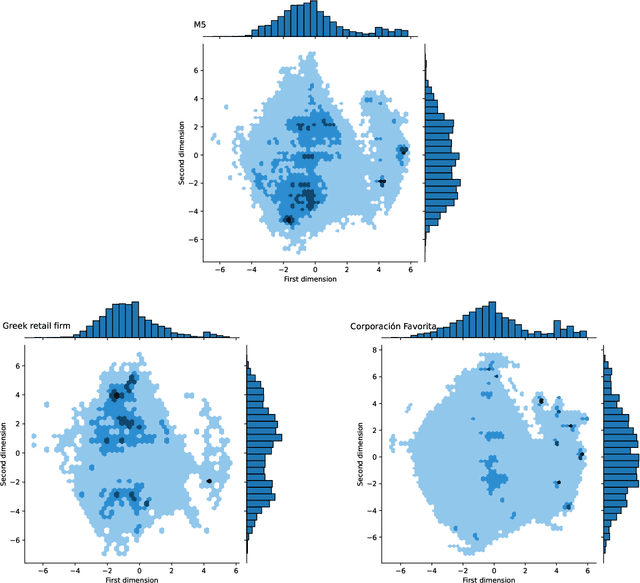
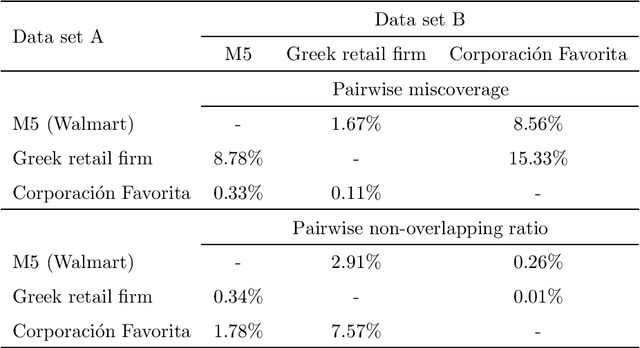
Abstract:The main objective of the M5 competition, which focused on forecasting the hierarchical unit sales of Walmart, was to evaluate the accuracy and uncertainty of forecasting methods in the field in order to identify best practices and highlight their practical implications. However, whether the findings of the M5 competition can be generalized and exploited by retail firms to better support their decisions and operation depends on the extent to which the M5 data is representative of the reality, i.e., sufficiently represent the unit sales data of retailers that operate in different regions, sell different types of products, and consider different marketing strategies. To answer this question, we analyze the characteristics of the M5 time series and compare them with those of two grocery retailers, namely Corporaci\'on Favorita and a major Greek supermarket chain, using feature spaces. Our results suggest that there are only small discrepancies between the examined data sets, supporting the representativeness of the M5 data.
Hierarchical forecast reconciliation with machine learning
Jun 03, 2020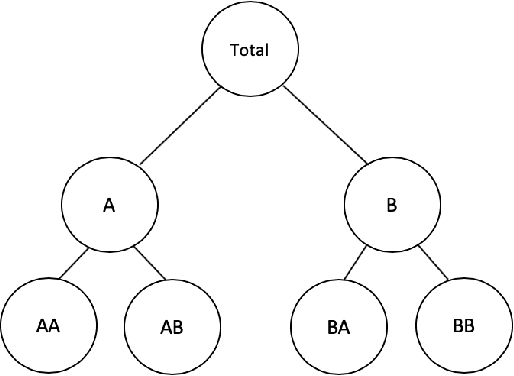
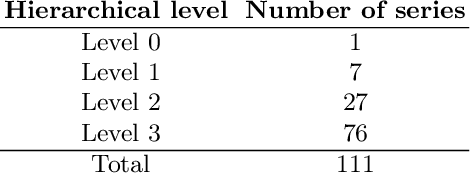
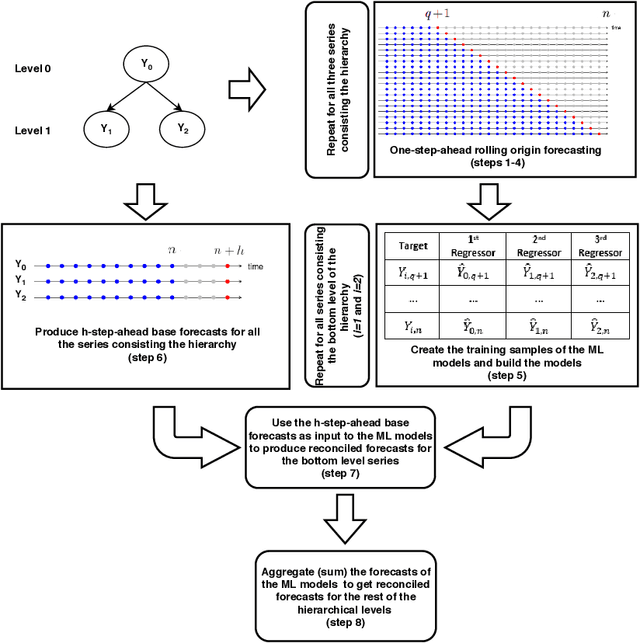

Abstract:Hierarchical forecasting methods have been widely used to support aligned decision-making by providing coherent forecasts at different aggregation levels. Traditional hierarchical forecasting approaches, such as the bottom-up and top-down methods, focus on a particular aggregation level to anchor the forecasts. During the past decades, these have been replaced by a variety of linear combination approaches that exploit information from the complete hierarchy to produce more accurate forecasts. However, the performance of these combination methods depends on the particularities of the examined series and their relationships. This paper proposes a novel hierarchical forecasting approach based on machine learning that deals with these limitations in three important ways. First, the proposed method allows for a non-linear combination of the base forecasts, thus being more general than the linear approaches. Second, it structurally combines the objectives of improved post-sample empirical forecasting accuracy and coherence. Finally, due to its non-linear nature, our approach selectively combines the base forecasts in a direct and automated way without requiring that the complete information must be used for producing reconciled forecasts for each series and level. The proposed method is evaluated both in terms of accuracy and bias using two different data sets coming from the tourism and retail industries. Our results suggest that the proposed method gives superior point forecasts than existing approaches, especially when the series comprising the hierarchy are not characterized by the same patterns.
 Add to Chrome
Add to Chrome Add to Firefox
Add to Firefox Add to Edge
Add to Edge